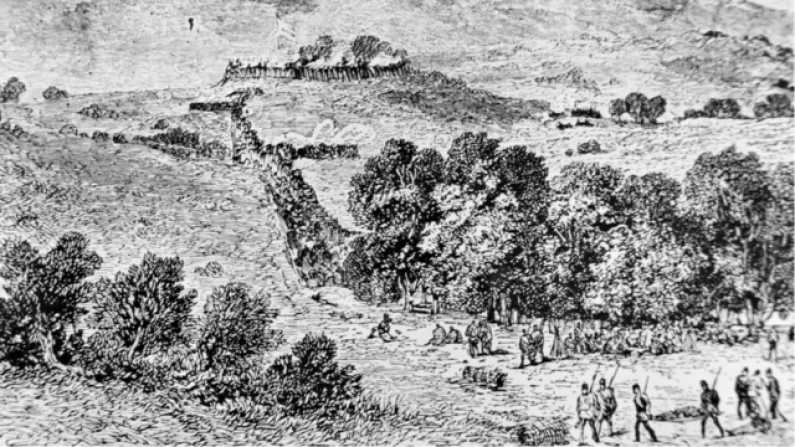The Battle of Ooraakau
The last campaign of the Waikato War

A line drawing of the Ooraakau Paa c.1860s Reference: HCL_04050
On 28 October, we pause on this national day of rememberance to acknowledge the lives lost during the New Zealand Wars. This day is known in te reo Maaori as Te Puutake o te Riri – He Raa Maumahara. Te Puutake o te Riri translates to “the reason or source of anger,” reflecting the deep and lasting impact these conflicts had on Māori communities. It is a time to reflect on the history, the struggles, and the enduring significance of these events in Aotearoa.
The Waikato War was one of the most important campaigns in New Zealand Wars, and was seen as the heart of the Kingitangi movement. The Waikato Maaori declared that the Mangatawhiri stream near Pokeno was a boundary the militia were not to cross. Governor George Grey vowed to “dig around” the Kingitangi until it fell, so in July 1863 his soldiers crossed the stream and fought their way through the Waikato.
The Battle of Ooraakau was the last major campaign of the Waikato War, and it begun on the 31st of March 1964. Ooraakau was once an idyllic home for Maaori. It was covered in a garden of fruit and root crops. There was an abundance of potatoes, kumara, maize, pumpkins, peaches, apples, and more. After the disastrous defeat at Rangiaowhia, Ngaati Maniapoto chief, Rewi Maniapoto, conceded to building a paa at Ooraakau, against his own better judgement. While it could be easily fortified, he feared it would have inadequate water supply with no obvious escape route.
Two surveyors nearby in Kihikihi spied the construction of this paa and informed the militia. An armed force was sent to investigate and two days later 1400 troops reached the incomplete fortified paa. There were only 300 defenders, and the fighting prevented more Maaori reinforcements from arriving. After two days the occupants of the paa were almost out of supplies with no help of getting more. After the last chance to surrender was given, Rewi allegedly responded, “Ka whawhai tonu matou, Aake! Aake! Aake! We will fight on forever and ever. The Maaori left the paa and caught the British by surprise and managed to break through the surrounding cordon. They then split into small groups and were pursued by the militia. Most casualties occurred at this time, with around 160 Maaori fighters killed.
This battle concluded the Waikato War, and the militia focused their attention on Tauranga. Grey was determined to kill the Kingitangi movement, and even though his men won the battles, the Kingitangi lived on.
